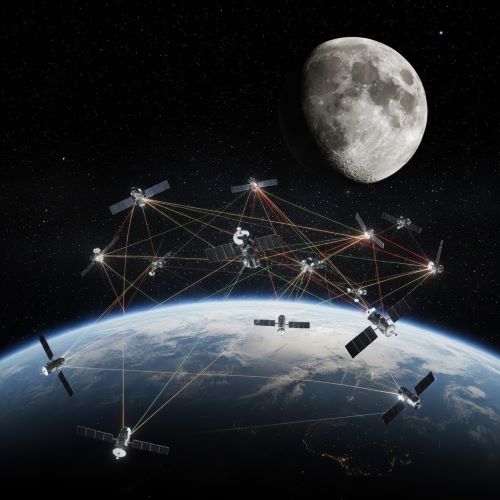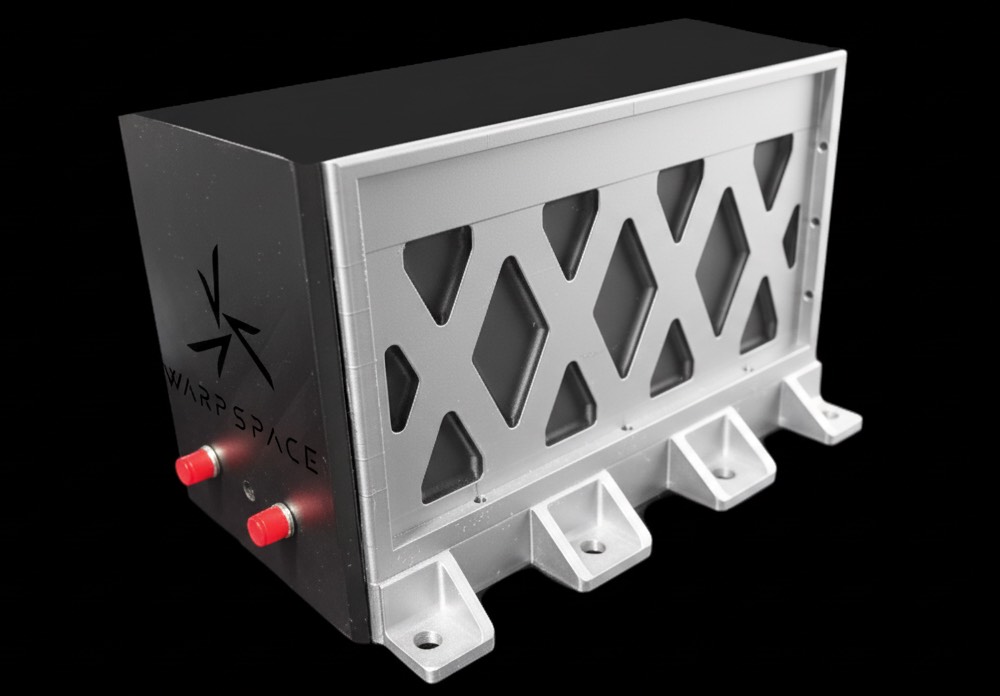29 September 2025

A conceptual image of a next generation laser communication network.
A new partnership between the University of South Australia (UniSA), Adelaide space start-up RapidBeam, and Japanese space technology company Warpspace is set to accelerate the future of space communications.
The three organisations have signed an agreement to develop next-generation laser communication systems, which promise faster, more secure, and more reliable data transfer than today’s radio-based technologies.
Unlike traditional radio waves, laser communications can send vast amounts of information across space with minimal delay. This makes them vital for everything from Earth observation and weather monitoring to deep space exploration.
At the centre of the collaboration is Warpspace’s advanced optical modem, known as HOCSAI. It will be tested and integrated into the Australasian Optical Ground Station Network – a laser communications network led by UniSA and spanning Australia and New Zealand.
The team will put the technology through its paces, ensuring it can connect with different systems, meet international standards, and work reliably in satellite-to-satellite and space-to-ground trials.
UniSA Mike Miller SmartSat Chair in Telecommunications, Professor Craig Smith, says the partnership will strengthen Australia’s position in the global space race.
“Free-space optical communications will be critical for future connectivity,” he says. “By combining our research expertise with industry innovation, we are helping to build resilient, high-capacity networks that will support space missions from low Earth orbit right through to deep space.”

Warpspace’s HOCSAI modem which will make lase satellite communications faster, more secure, and more reliable.
Warpspace Group Chief Strategy Officer, Hirokazu Mori, says the collaboration marks an important milestone in Japan–Australia cooperation.
“Working with RapidBeam and UniSA allows us to accelerate the development of new technologies and expand into Australia’s fast-growing space sector,” he says. “Together we anticipate breakthroughs that will benefit both countries and the global industry.”
For RapidBeam, the partnership aligns with its vision of building a sovereign 5G satellite constellation to provide reliable connectivity for emergency services, defence and remote areas.
According to founder Adi Rajendran, “laser satellite communications will be the backbone of secure, high-capacity networks.”
“Warpspace’s modem is a major step forward, directly supporting our plans for a constellation that can keep people connected on Earth and ultimately pave the way for interplanetary communications.”
RapidBeam participated in the globally recognised space accelerator program, Venture Catalyst Space in 2024 delivered by UniSA’s Innovation & Collaboration Centre.
Media contact: Candy Gibson M: +61 434 605 142 E: candy.gibson@unisa.edu.au



